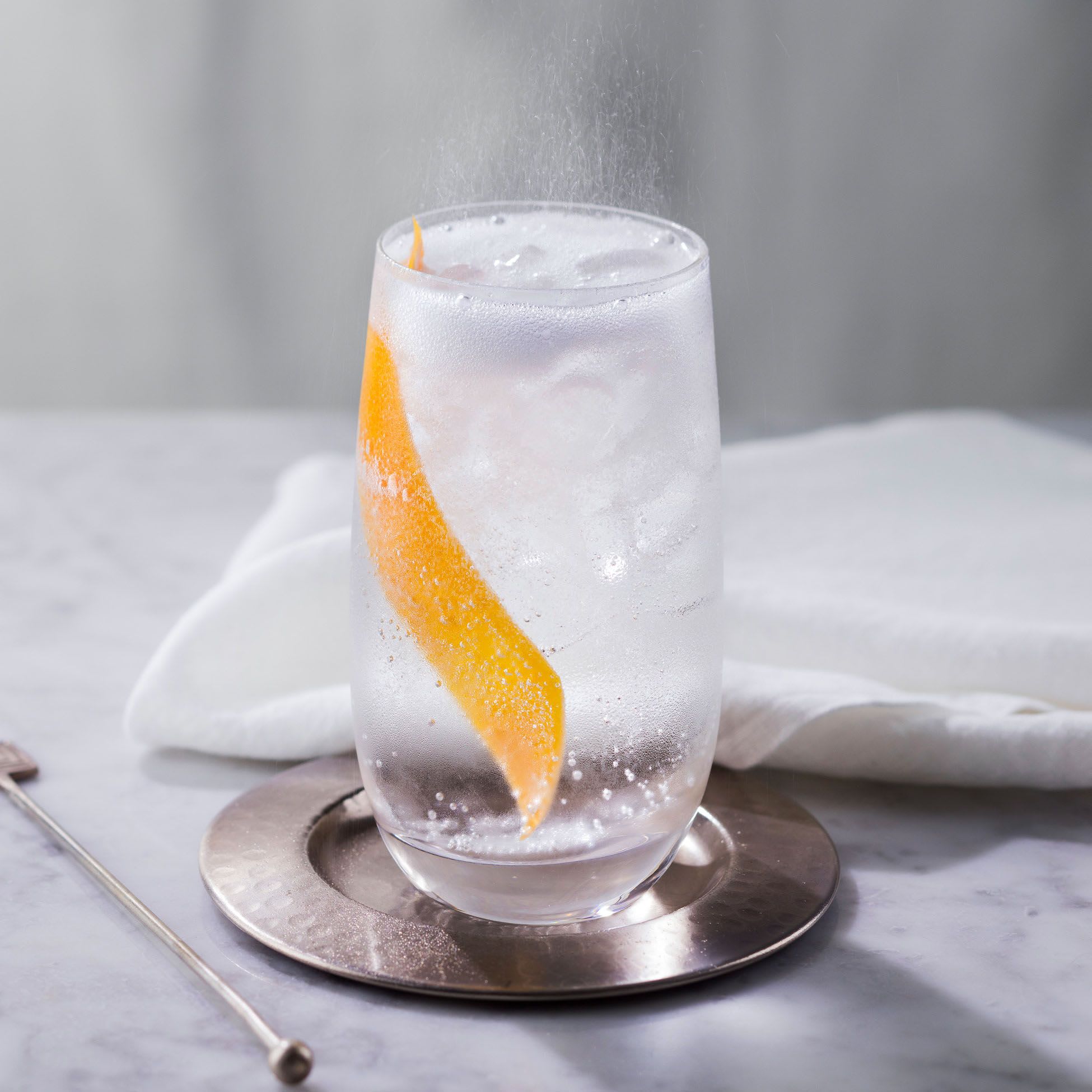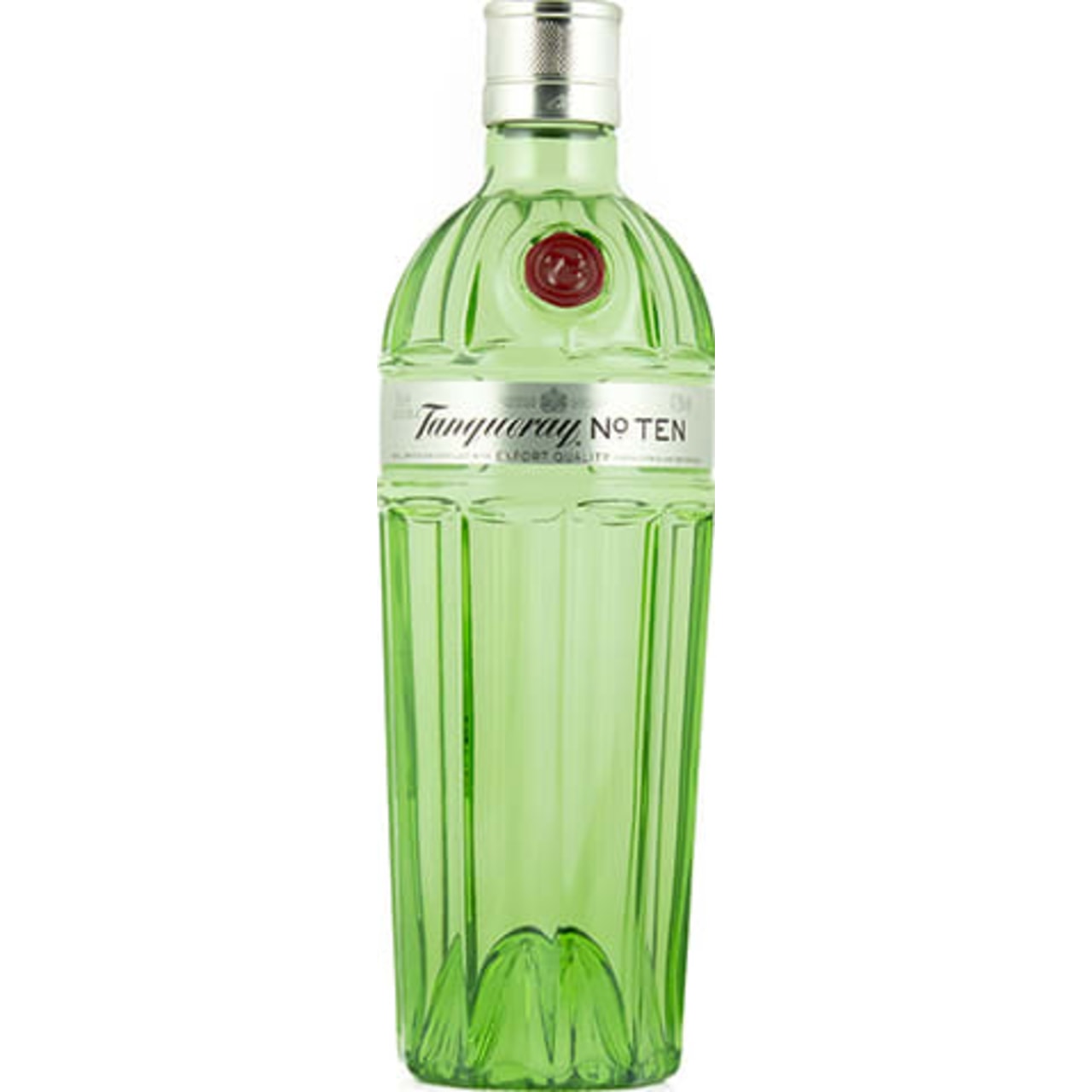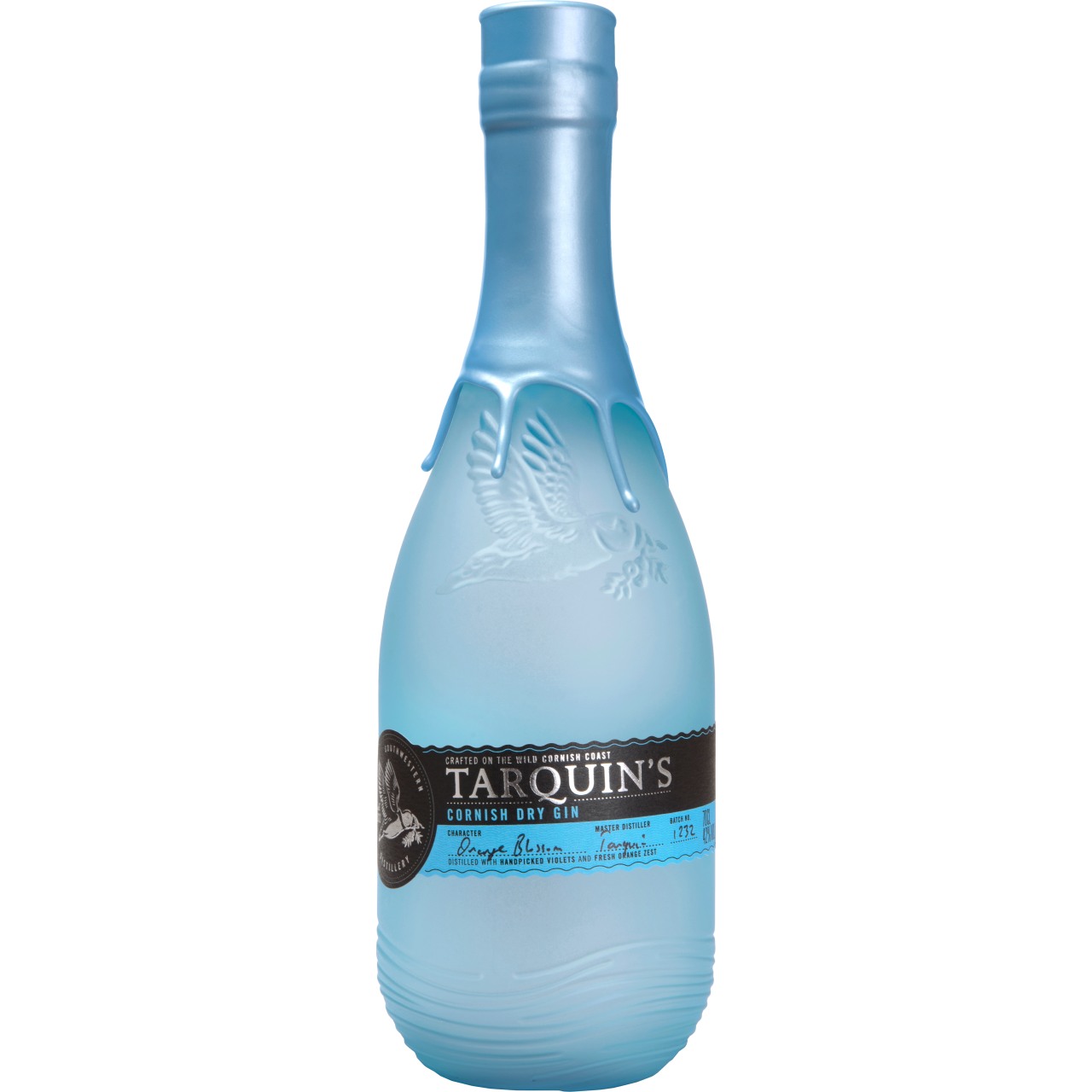It is almost impossible to imagine, let alone find a more quintessential pairing across any spirit category than the Gin & Tonic.
So ubiquitous is the drink that even when you reduce it to three characters, G&T, everyone still understands what you are talking about. What other drink in the world has achieved this? Don’t be fooled however, the concoction may seem simple but both its history and the dizzying array of gin, tonic and garnish combinations make it far from an ordinary drink.


A basic recipe:
Made with gin and tonic water, poured over ice and typically garnished with a slice or wedge of lime or lemon, the G&T makes for a very simple drink so choosing quality ingredients is important.
In recent years, there’s been a veritable explosion in tonics and huge interest behind finding the perfect combination pairing the right garnish to harness, accentuate or contrast the inherent flavours of gins.
The ideal amount of gin to add varies according to taste but we suggest that a healthy ratio of gin-to-tonic is 1 part gin to 3 parts tonic will suit most people. Statistically (based on annual surveys in taken by over 3000 people each year) this is the most popular ratio, but it’s worth noting there has been a clear trend towards boozier (1 part gin to 2 parts tonic) ratios in the UK and 1 to 1 ratios in the USA.
Experiment to find your perfect serve!
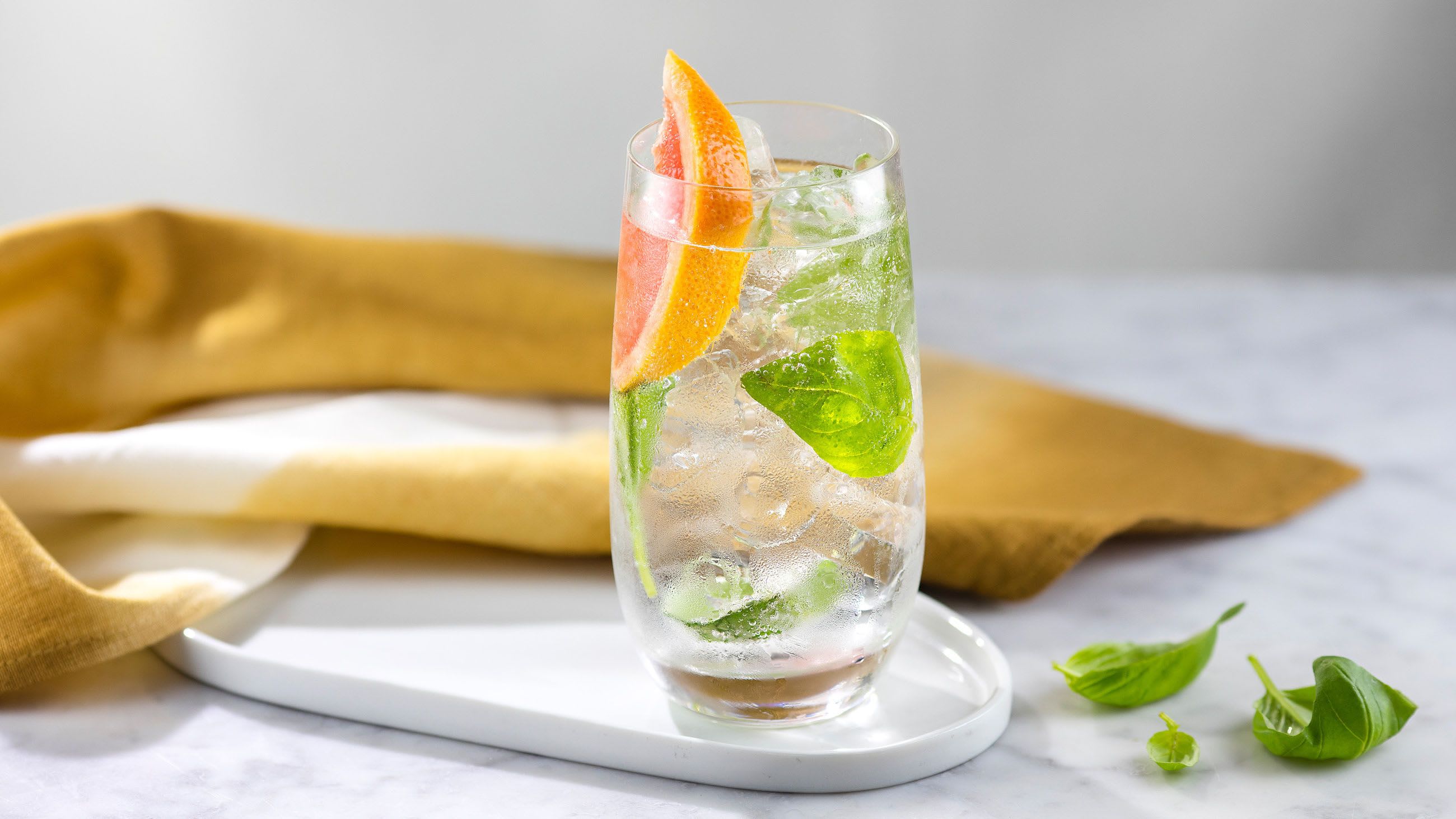

G&T's Origins in short:
The history of the G&T really begins to take shape with the East India Trading Company and British colonial India, when the British troops would mix their medicinal quinine with gin to make it more palatable.
It wasn’t the first time quinine was used to treat malaria, as there are reports of its usage in 1631 when malaria was endemic to the swamps and marshes surrounding the city of Rome (with large scale use of quinine as a prophylaxis starting around 1850).
It is clearly possible to trace the gin and tonic back to the early days of Queen Victoria and expatriates returning from the Indian colonies who had developed a taste for the concoction, but this is too simple a version of history. Tonic wines made with quinine were also on the market and the rise of the G&T is a murky culmination of factors - medicine, colonial empires, the move of some medicinal tinctures and concoctions into more recreational drinking contexts, the dawn of carbonated drinks and iced drinks becoming a known luxury.
The often repeated origin story may be simple to grasp and make a catchy headline, but history seldom is. Moreover, it's all those elements and the way they create a confluence of factors that makes the rise of such an iconic cocktail possible in the first place so fascinating.
Equally, it’s impossible to say whether the addition of lime to the G&T was to help fight off the scurvy commonly found in those on the front line or whether this had been post-rationalised to fit in with the likely origin of the drinks. The latter is more likely as the Gimlet stakes its place for the medicinal concoction originating from anti scurvy campaigns. In either case, a splendid addition to the G&T was born and today, the garnish remains key to the drink.
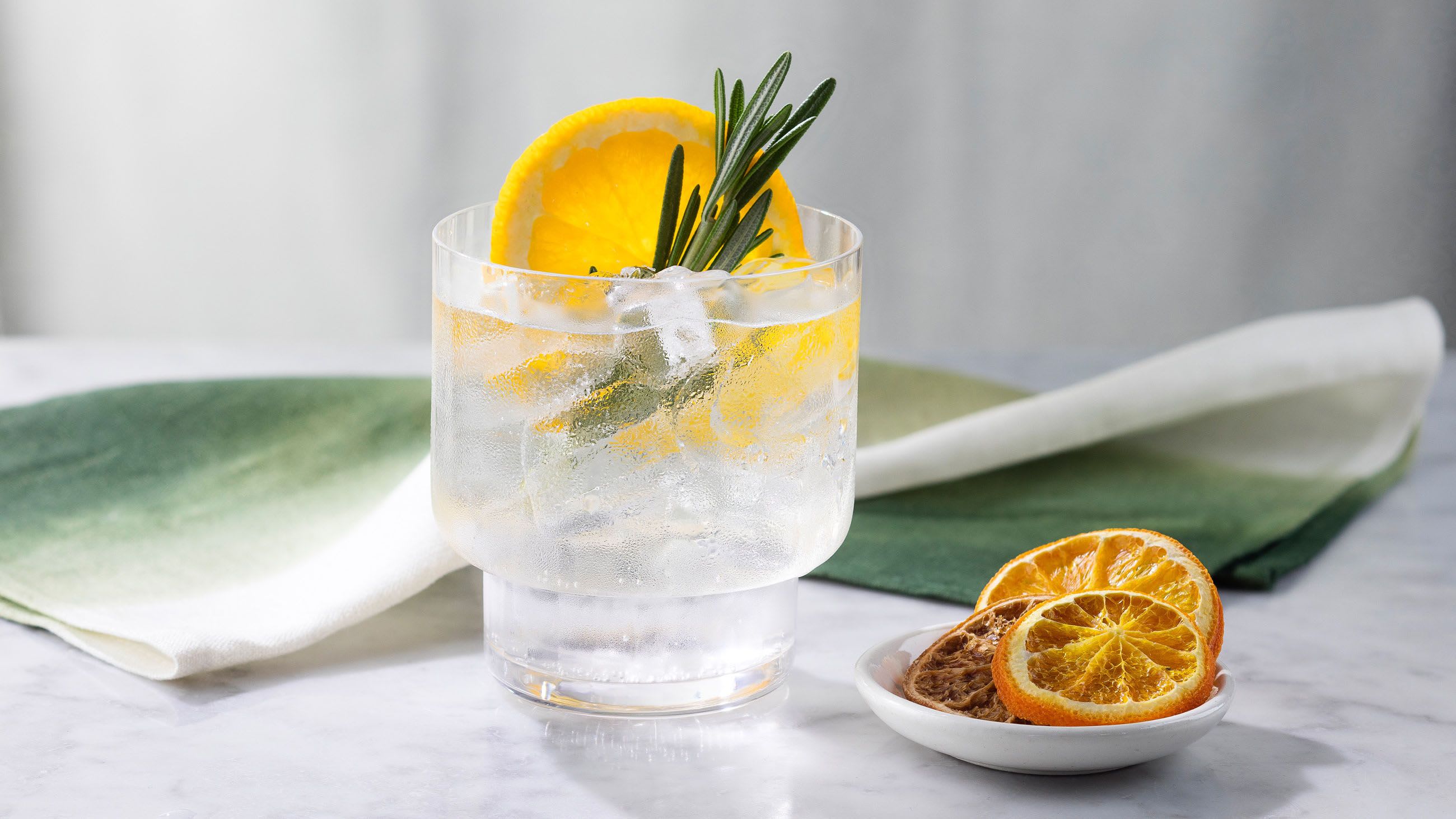

Understanding the components:
Understanding how to pair a gin with a specific tonic and a particular garnish, is the much like chasing the holy grail. The end goal is discovering the holy trinity and eternal enlightenment, but it’s the quest itself that becomes the tale that everyone talks about and where you need to devote your time.
Tonic water
Choosing the right tonic is as vital as choosing your gin, as it is usually two thirds of the drink. One of the main causes why people have a life-long aversion to the G&T is because of poor quality tonics, warm mixers and/or wrong ratios.
Thankfully, since 2005 there has been an increase in premium tonic water in the market place, with a greater emphasis on using real quinine and natural sweeteners as opposed to artificial flavourings.
Fever-Tree have been leading the charge with a large portfolio of flavours including Elderflower, Mediterranean and Light Tonic ranges. Fentiman's now have almost a dozen tonics in their range, and Schweppes have launched a premium line of tonics to accompany their age old classic Indian Tonic.
German based Thomas Henry Tonic water is also worth seeking out for those who like a more bitter profile, while 1724 Tonic water offers a sweeter alternative with a citrusy edge. Double Dutch mixers have a particularly excellent slimline offering alongside their regular tonic water, and East Imperial off a more traditionally (think old school bitter) tonic water which is ideal for those who like squeezing their lime garnish before dropping it into their G&T.
Australia is well represented in the quality tonic offerings by the likes of Capi and Strangelove, both of which as a delicious as their ranges are expansive.
Even if you stick to Indian Tonic water and avoid the flavoured variants, there are literally dozens and dozens of tonics out there for you to try.
A word on glassware
Traditionally, collins or high-ball glasses have been used for G&T’s. However, shorter glasses and in particular the Spanish style “Copa” glass have become more popular as they better accentuate the effects of a garnish given they capture the aroma better.
These balloon sized glasses may seem excessive at first, but trust us, they really do help if you are looking to create an ensemble of flavours as the smells leading up to each sip have a huge impact on one’s perception of flavours. Whatever you choose to serve it in, just remember the only golden rule of Gin & Tonics is to never skimp on the ice!
Garnishes
So what to serve with each Gin you ask? It would be impossible to list each gin alongside the perfect garnish as preferences are so subjective. It’s also worth remembering that one gin can work with many garnishes and the differences are more about what inherent flavours you are looking to accentuate, harness or contrast to match you mood.
Here’s a few general pointers that have worked for us in the past:
With a spiced gin, try an orange wheel as this warming and soft fruit compliments botanicals such as clove and cassia.
For a citrusy gin, consider balancing it out with flat leaf coriander, which can add a little zing to the lemon while providing leafy depth.
For floral gins, a grapefruit peel can add just a touch of freshness without upsetting the delicate aromas. To accentuate the flavours and create a heady aromatic mix in floral gins – a sprig of rosemary can be a perfect compliment to lavender forward gins. Vice-versa, a lavender stem not only looks beautiful, it adds a touch of fresh meadows to herbal-lead gins.
Furthermore, a wedge of apple in the place of lemon or lime can help provide a touch of acidity and really compliments herbaceous gin.
